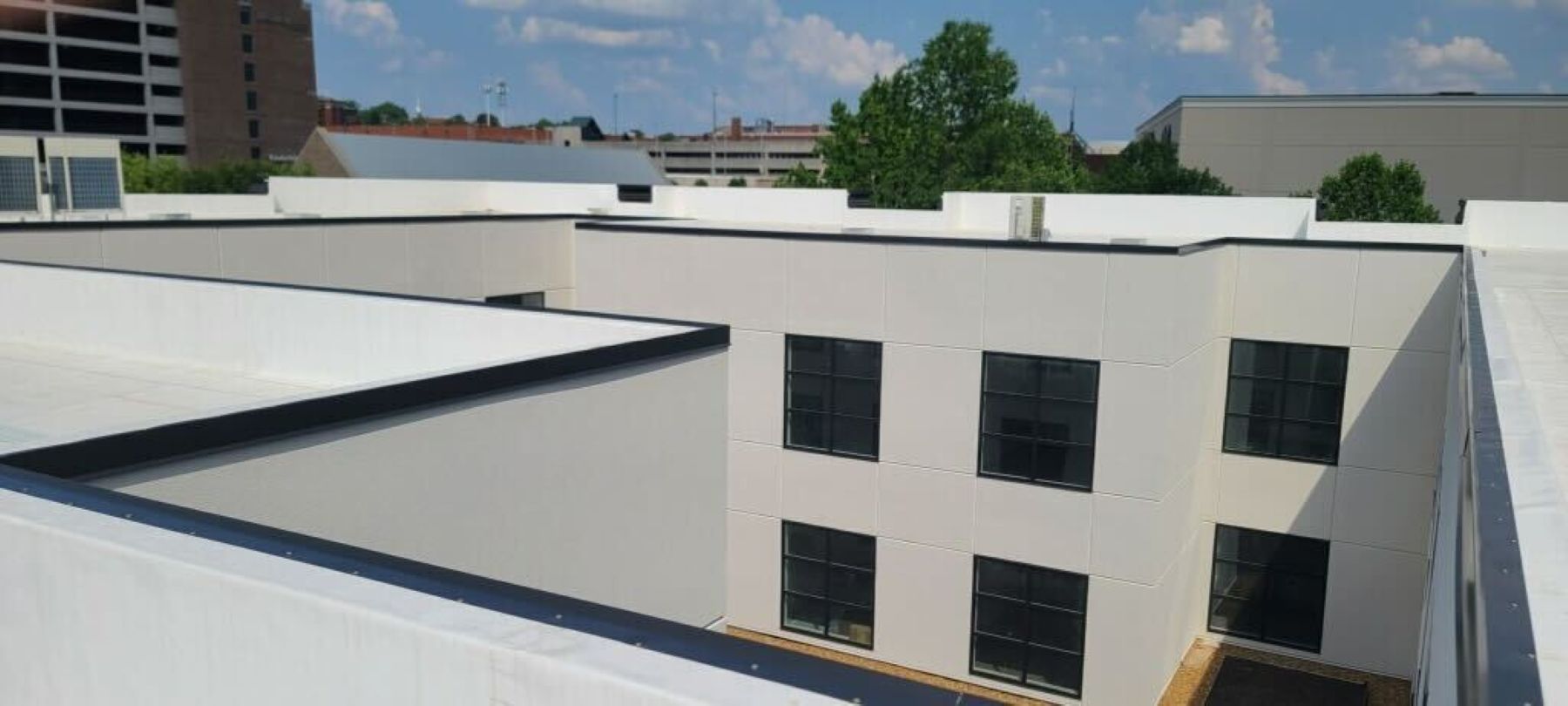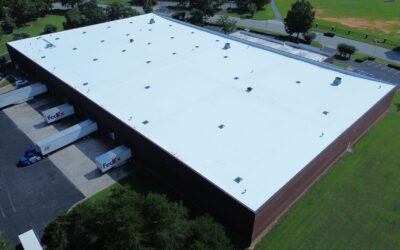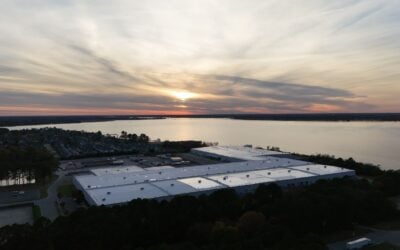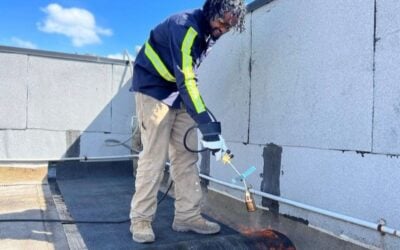Roof leaks are one of the most common and costly issues property owners face, especially in commercial buildings. Even a minor leak can lead to severe damage if left unaddressed. Whether it’s a slow drip or a sudden downpour inside your building, it’s crucial to act fast. Ignoring roof leaks not only compromises the safety of your employees or tenants but also impacts your business’s bottom line. In this blog post, we’ll discuss how to handle roof leaks before they escalate into significant damage and costly repairs.
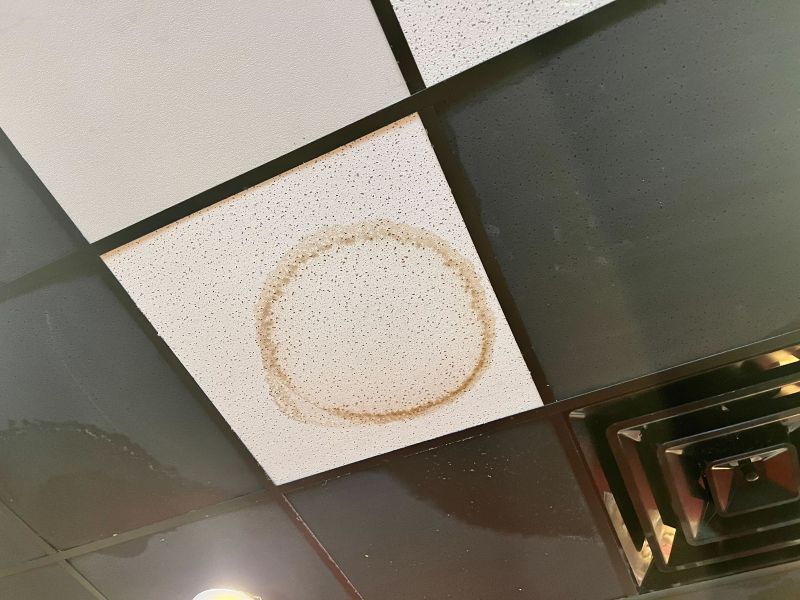
1. Identify the Source of the Leak Early
The first step in managing roof leaks is identifying the source of the problem. Sometimes the leak may be easy to spot—such as a visible hole or damaged panels—but other times, water may travel along beams or insulation, making it harder to locate.
Common causes of roof leaks include:
Damaged Tiles: These are especially prone to wear and tear from weather conditions, leading to leaks.
Clogged Gutters: If gutters are not cleared regularly, they can cause water to back up onto the roof, which may lead to leaks.
Flashing Failures: Flashing around vents, chimneys, and skylights can deteriorate over time, allowing water to seep in.
Punctures or Cracks: Even small punctures caused by falling debris can lead to leaks.
Once you identify the leak’s source, you can take the necessary steps to repair it and prevent further damage.
2. Take Immediate Action
The quicker you act, the less damage you’ll sustain. If you discover a leak, here are some immediate steps you can take to limit water intrusion:
Contain the Leak: Set up buckets, tarps, or other containment measures to catch the water and prevent it from damaging floors, equipment, or inventory.
Move Valuable Items: Relocate any important or valuable equipment and furniture out of the leak’s path. The last thing you want is to deal with water damage to critical business assets.
Use Temporary Roofing Solutions: If you’re unable to get immediate professional help, consider using waterproof tarps or roofing tape to temporarily seal the area. Make sure the tarp is securely fastened to avoid being blown away by wind or rain.
Remember, temporary fixes are only a short-term solution. Always call a professional roofing contractor to fully assess and repair the damage as soon as possible.
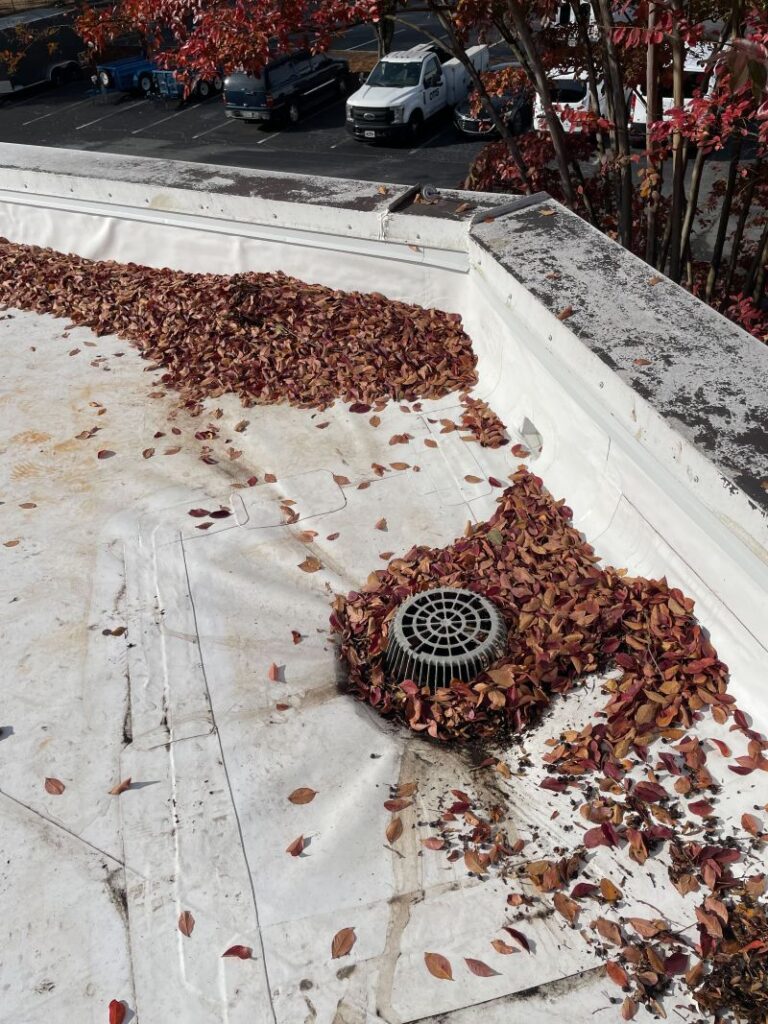
3. Schedule a Professional Inspection
Even if the leak appears to be small or localized, it’s essential to schedule a professional roof inspection. Experienced commercial roofing contractors have the tools and expertise to locate and repair not only the visible leaks but also underlying issues that may not be immediately apparent.
A professional roofing inspection will:
Evaluate the Roof’s Condition: The inspector will check for any signs of wear, damage, or weak spots that could cause leaks in the future.
Check for Hidden Damage: Professionals can spot hidden problems like mold, mildew, or structural damage caused by water intrusion, which could lead to expensive repairs if ignored.
Recommend Preventive Measures: Your contractor will advise you on maintenance steps that can reduce the likelihood of future leaks and extend the life of your roof.
4. Implement Regular Roof Maintenance
The best way to prevent roof leaks is to invest in regular roof maintenance. Roofs are subjected to constant wear from the elements, so it’s essential to keep them in good condition.
Regular roof maintenance includes:
Cleaning Gutters and Drains: Ensure that gutters and drains are clear of debris so water can flow freely off the roof.
Inspecting and Replacing Damaged Shingles: Check for missing, cracked, or curling areas and replace them promptly.
Sealing Flashing: Ensure that flashing around vents, and skylights is properly sealed and in good condition.
Checking for Ponding Water: Roofs that don’t have proper drainage can accumulate water, leading to leaks. Make sure your roof is sloped properly to prevent water buildup.
By scheduling semi-annual or annual inspections, you can catch minor issues before they become major problems.
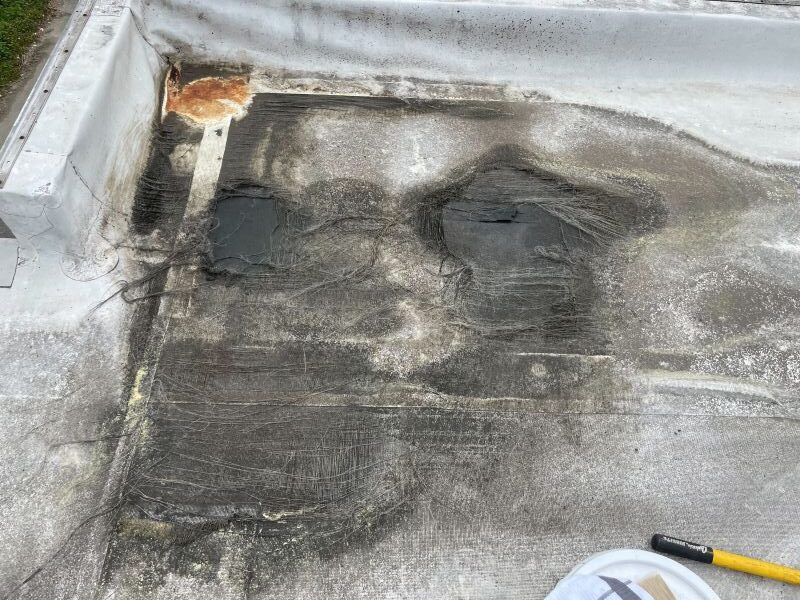
5. Know When to Replace the Roof
While regular maintenance can extend the life of your roof, there comes a time when a roof is beyond repair. If your roof is old and experiencing frequent leaks, it may be more cost-effective to replace it than continually patching it up.
Signs it may be time for a new roof include:
Frequent Leaks: If leaks are happening repeatedly despite repairs, your roof may be past its prime.
Visible Wear and Tear: If you notice widespread damage, sagging, or noticeable aging of materials, replacement might be necessary.
Energy Inefficiency: An old roof can cause your building to become less energy-efficient, leading to higher utility bills.
A new roof can give you peace of mind, knowing your building is protected from the elements for years to come.
Conclusion
Roof leaks may seem like a small issue at first, but they can quickly escalate into significant problems if not addressed promptly. By identifying the source of the leak, acting quickly to contain it, scheduling regular inspections, and performing necessary maintenance, you can prevent roof leaks from causing serious damage to your commercial building. If you’re dealing with a roof leak, don’t wait—contact a professional roofing contractor today to ensure your roof is in top condition and protect your business from costly repairs down the line.

